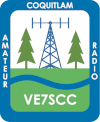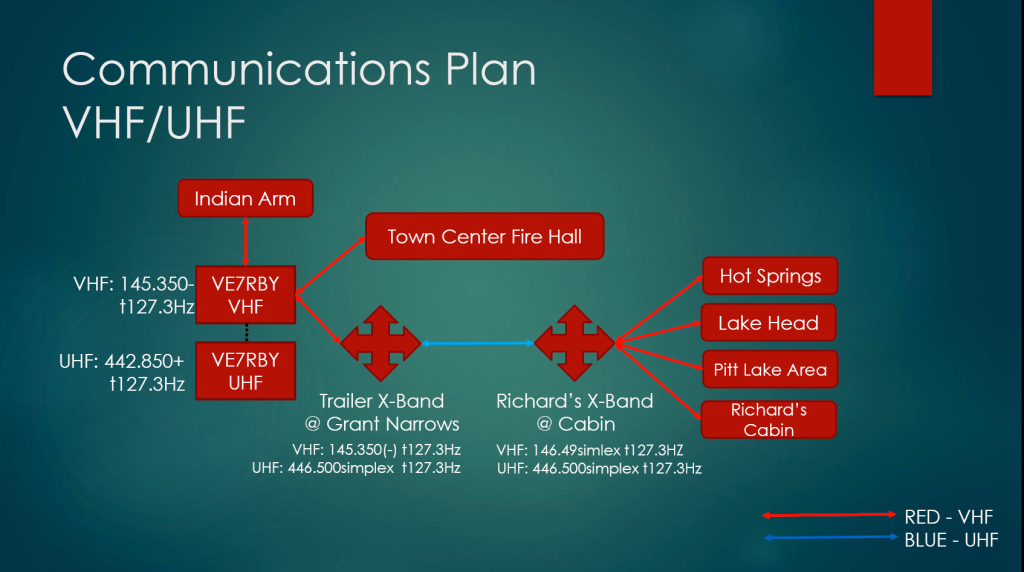Coquitlam Search and Rescue invited CARESS to participate with a multi-organization exercise at Pitt Lake BC with the goal to establish a reliable communication network spanning multiple locations. The intention was to set both voice and data links from the head of Pitt Lake down to Grant Narrows and then to the VE7RBY repeater for the purposes of relaying critical emergency messages between the teams at various locations.
Part of the exercise was to determine the quality of radio communications throughout the Pitt Lake region.
The result: a very successful deployment by the CARESS amateur radio operators. Emergency messages were successfully relayed from the north end of Pitt Lake down to the City of Coquitlam Town Centre Firehall.
Acknowledgements:
On behalf of CARESS, we thank the Burnaby Amateur Radio club www.ve7bar.org for the use of their VE7RBY repeater for most of the day; to Coquitlam SAR for allowing us to be part of this important exercise and of course to the CARESS members that participated.
Background Information:
http://www.tricitynews.com/news/275346671.html Local media reporting on the exercise.
http://sarxsw.ca/sarxsw-2014/ The seminars held at Douglas College.
The Plan:
Ian Procyk VE7HHS drafted a detailed plan that included multiple locations and numerous equipment configurations:
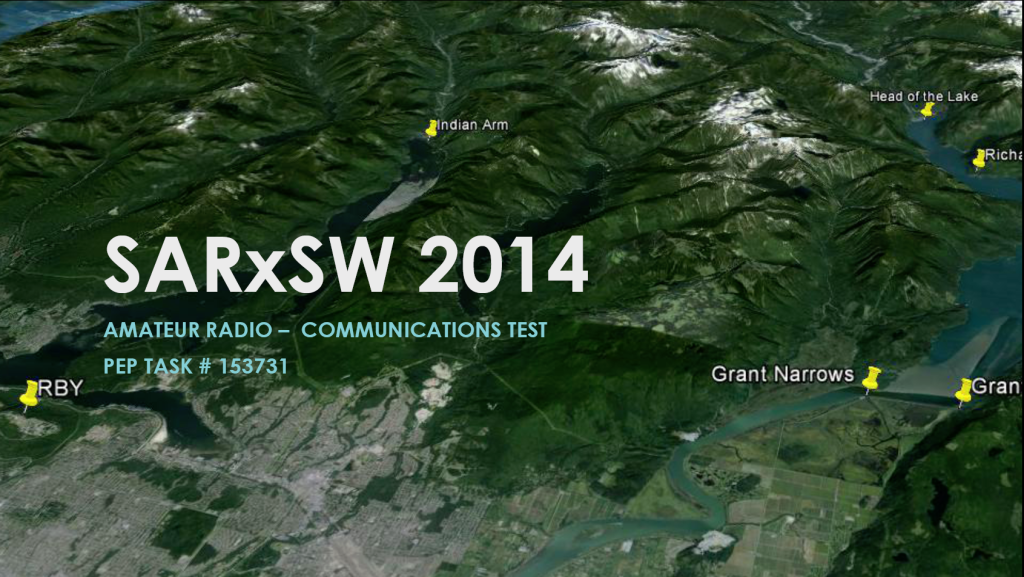 Grant Narrows: Deployment of the CARESS satellite trailer with a cross band UHF-VHF repeater linking the SAR exercise communication network at Pitt Lake with the VE7RBY 2m repeater. Operators included: Ian Procyk VE7HHS, Phil MacCormick VE7KJR, Dan Marsland VA7DCR.
Grant Narrows: Deployment of the CARESS satellite trailer with a cross band UHF-VHF repeater linking the SAR exercise communication network at Pitt Lake with the VE7RBY 2m repeater. Operators included: Ian Procyk VE7HHS, Phil MacCormick VE7KJR, Dan Marsland VA7DCR.
CASARA Flight: Marcy Lui VE7JT was a passenger in a Cessna as part of the CASARA team.
Cabin (Subiaco Cove): Richard Wodzianek VA7RLW, Nick Wodzianek VA7JFX, Don Hill VA7LNX and Carlos Fang VA7CFK were up at a cabin at Subioaco Cove (3/4 up the lake) setting up a UHF-VHF cross-band repeater along with an HF station for relaying messages.
Coquitlam Town Centre Firehall: This stations was operated by Paul Bryan VA7CDB, Gord Barker VE7GVB, Hugh Mitchell VA7AHM.
Paul Wagner VE7TL was our roamer – going from one location to another ensuring that communications were being received properly.
The communication links included a UHF-VHF cross-band repeater located at Subiaco Cove (cabin) and at the CARESS trailer at Grant Narrows.
Due to logistical issues, the CARESS operators did not reach the hot springs located about 20km north of the Pitt Lake head.
Grant Narrows:
Grant Narrows was CARESS’ command center along with the rallying and dispersal point for the various regional SAR teams.
Photos below courtesy of Dan VA7DCR.
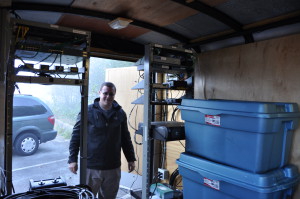
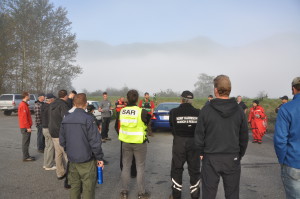
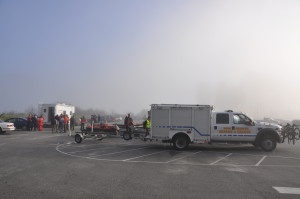
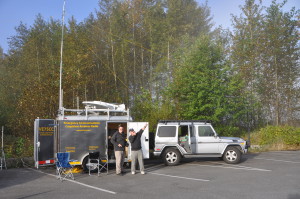
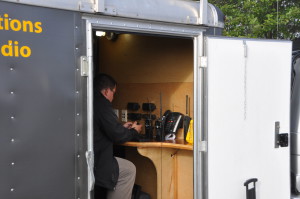
Subiaco Cove (Cabin):
Pitt Lake is large and deep with cliffs on both sides at the northern end. There are several communities of cabins throughout the lake – but you can only reach them by boat. Communication is limited. There is absolutely no cellphone coverage north of Goose Island. It was necessary to set up a UHF-VHF cross band repeater in the middle of the lake in order for the SAR teams deployed at the upper end of Pitt Lake to confidently communicate all the way down to the City of Coquitlam Town Centre Firehall.
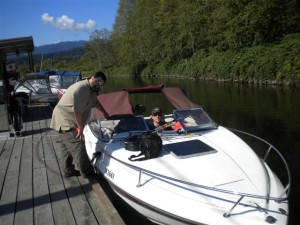
The cabin at Subiaco Cove has a generator, solar panels and inverter. The CARESS team went up to the cabin by boat from the Pitt River Boat Club on the Saturday to set up the temporary radio station.
The station at the cabin consisted of:
- Yaesu FT-8800 – UHF-VHF cross band repeater
- Yaesu FT-897D – HF station
- Numerous HT hand held radios set for 146.490 Simplex with tone 127.3.
- 80m dipole (sloper)
- UHF Yagi antenna
- VHF vertical base station antenna
- Buddipole antenna – for 40m and 15m
- Numerous test and diagnostic equipment
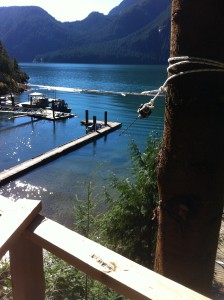
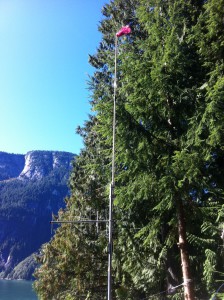
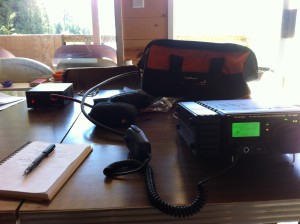
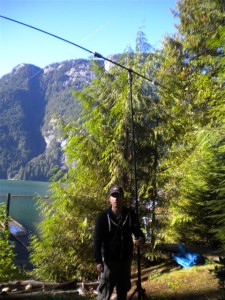
During the evening, we received an excellent report from Al Ross VE7WJ on 3.716 MHz – the BC Yukon NTS Traffic net.
During the day on Sunday, HF communication was not favourable with the best local NVIS chatter on 15m.
CASARA:
The Civil Air Search And Rescue Association amateur radio operating team (in a Cessna) consisted of Marcy Lui VE7JT.
She successfully communicated with the various teams using the cross-band repeater as she flew from the Pitt Meadows Airport and around Pitt Lake. The VE7RBY repeater was difficult to reach while she was at the upper end of the lake – not a surprise.
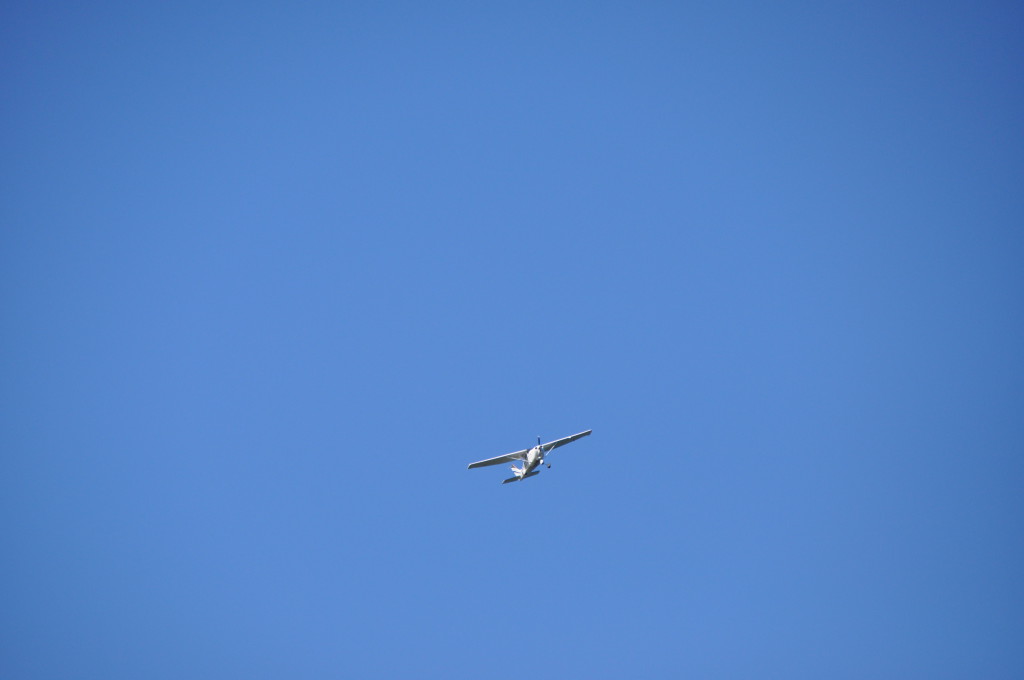
Lake Head:
On Sunday, Don VA7LNX, Carlos VA7CFK and Nick VA7JFX took additional equipment up to the upper end of Pitt Lake to establish a station at that remote location. The upper Pitt River empties into the north end of Pitt Lake and a road parallels it and goes up to the Pitt River Lodge and Pitt River Hot Springs. This is a very rugged, beautiful and remote area and this is definitely where you need effective radio communication in case you need help.
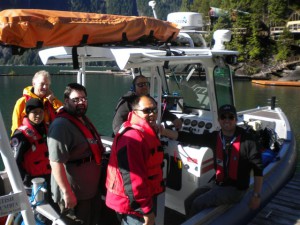
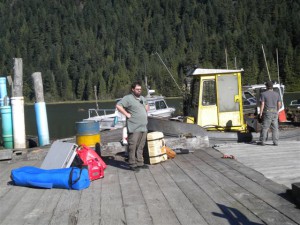
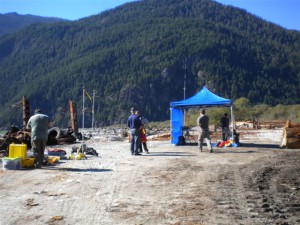
From this location, the team relayed both voice and data emergency messages (simulated) all the way down to the fire hall.
Conclusion:
The exercise was very successful. Well done to the CARESS members that participated to make this happen.
Next steps: a summary report will be sent to the Coquitlam SAR coordinator with our findings.
As for CARESS, we learned a lot and will collect our notes and experiences on how to improve our planning and deployment if and when we get called upon by Coquitlam SAR to do this again.
Are we ready – you bet!
